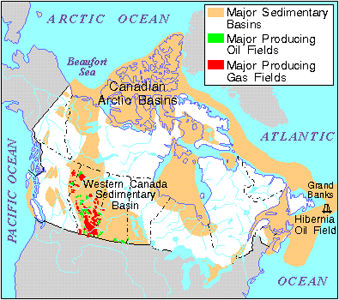Article
Permanent Joint Board on Defence
The Permanent Joint Board on Defence is a Canadian-American advisory body established at Ogdensburg, NY, 18 August 1940, by PM Mackenzie King and US President F.D. Roosevelt.

Enter your search term
Signing up enhances your TCE experience with the ability to save items to your personal reading list, and access the interactive map.
Create AccountArticle
The Permanent Joint Board on Defence is a Canadian-American advisory body established at Ogdensburg, NY, 18 August 1940, by PM Mackenzie King and US President F.D. Roosevelt.
"https://www.thecanadianencyclopedia.ca/images/tce_placeholder.jpg?v=e9dca980c9bdb3aa11e832e7ea94f5d9" // resources/views/front/categories/view.blade.phphttps://www.thecanadianencyclopedia.ca/images/tce_placeholder.jpg?v=e9dca980c9bdb3aa11e832e7ea94f5d9

Article
In 1991, Canada joined an international military coalition to confront Iraq following its invasion of Kuwait. Canada contributed warships and fighter aircraft to the successful campaign to liberate Kuwait. It was the first time Canada sent women to war in combat roles, and it was the first time in decades that Canadian air and naval forces supported each other in a war zone. More than 5,100 Canadian military personnel served in the war, with a peak of about 2,700 in the region at one time. No members of the Canadian armed forces died during the conflict.
"https://d3d0lqu00lnqvz.cloudfront.net/media/media/6d7d5d34-f0d2-4f3b-9f9b-997d3b6ec7a8.jpg" // resources/views/front/categories/view.blade.phphttps://d3d0lqu00lnqvz.cloudfront.net/media/media/6d7d5d34-f0d2-4f3b-9f9b-997d3b6ec7a8.jpg

Article
Persistent organic pollutants (POPs) are carbon-based chemical compounds or groups of chemical compounds of anthropogenic (resulting from human activities) origin that are biologically and chemically inert.
"https://www.thecanadianencyclopedia.ca/images/tce_placeholder.jpg?v=e9dca980c9bdb3aa11e832e7ea94f5d9" // resources/views/front/categories/view.blade.phphttps://www.thecanadianencyclopedia.ca/images/tce_placeholder.jpg?v=e9dca980c9bdb3aa11e832e7ea94f5d9

Article
The Persons Case (Edwards v. A.G. of Canada) was a constitutional ruling that established the right of women to be appointed to the Senate. The case was initiated by the Famous Five, a group of prominent women activists. In 1928, the Supreme Court of Canada ruled that women were not “persons” according to the British North America Act (now called the Constitution Act, 1867). Therefore, they were ineligible for appointment to the Senate. However, the Judicial Committee of the Privy Council reversed the Court’s decision on 18 October 1929. The Persons Case enabled women to work for change in both the House of Commons and the Senate. It also meant that women could no longer be denied rights based on a narrow interpretation of the law.
"https://d3d0lqu00lnqvz.cloudfront.net/media/media/65699b89-06c0-4518-aa06-4eea43f2ec74.jpg" // resources/views/front/categories/view.blade.phphttps://d3d0lqu00lnqvz.cloudfront.net/media/media/65699b89-06c0-4518-aa06-4eea43f2ec74.jpg

Article
The Persons Case was a constitutional ruling. It established the right of women to serve in the Senate. The case was started by the Famous Five. They were a group of women activists. In 1928, they objected to a Supreme Court of Canada ruling that women were not “persons.” As such, they were not allowed to serve in the Senate. The Famous Five challenged the law. In 1929, the decision was reversed. As a result, women were legally recognized as “persons.” They could no longer be denied rights based on a narrow reading of the law. (This article is a plain-language summary of the Persons Case. If you are interested in reading about this topic in more depth, please see the full-length entry.)
"https://d3d0lqu00lnqvz.cloudfront.net/media/media/65699b89-06c0-4518-aa06-4eea43f2ec74.jpg" // resources/views/front/categories/view.blade.phphttps://d3d0lqu00lnqvz.cloudfront.net/media/media/65699b89-06c0-4518-aa06-4eea43f2ec74.jpg

Article
Substances used to control pests include insecticides (for control of insects), fungicides (for disease-causing fungi), herbicides (for weeds), rodenticides (for rodents), avicides (for birds), piscicides (for fish) and nematicides (for nematodes).
"https://www.thecanadianencyclopedia.ca/images/tce_placeholder.jpg?v=e9dca980c9bdb3aa11e832e7ea94f5d9" // resources/views/front/categories/view.blade.phphttps://www.thecanadianencyclopedia.ca/images/tce_placeholder.jpg?v=e9dca980c9bdb3aa11e832e7ea94f5d9

Article
Petitioning is one of the most common tools of political protest accessible to the local population. Limited during the era of New France, the practice of collectively petitioning political authorities became much more frequent in the years following the Conquest by the British. Sanctioned in the 1689 Bill of Rights, petitioning had been a common practice in Britain for centuries, and ever since 1763, Canadians have been sending petitions to their governments (colonial, imperial, federal, provincial, and municipal) for a variety of reasons. With the recent introduction of e-petition, Canadians, more than ever, can have their voices heard in government.
"https://d3d0lqu00lnqvz.cloudfront.net/media/media/7770f93e-7f5e-4cb8-b6ad-57df24227db6.jpg" // resources/views/front/categories/view.blade.phphttps://d3d0lqu00lnqvz.cloudfront.net/media/media/7770f93e-7f5e-4cb8-b6ad-57df24227db6.jpg

Article
Petro-Canada, created by the federal government in the mid-1970s as Canada's national oil company, was the offspring of the world energy crisis, Canadian ECONOMIC NATIONALISM, and a tradition of state-supported development of the country's costly energy frontier.
"https://www.thecanadianencyclopedia.ca/images/tce_placeholder.jpg?v=e9dca980c9bdb3aa11e832e7ea94f5d9" // resources/views/front/categories/view.blade.phphttps://www.thecanadianencyclopedia.ca/images/tce_placeholder.jpg?v=e9dca980c9bdb3aa11e832e7ea94f5d9

Article
The petrochemical industry, which produces chemicals using OIL AND NATURAL GAS as major raw materials, occupies an important position in Canada's MANUFACTURING and consuming sectors. Oil and natural gas are composed primarily of hydrocarbons. Most petrochemicals contain hydrogen or carbon or both.
"https://www.thecanadianencyclopedia.ca/images/tce_placeholder.jpg?v=e9dca980c9bdb3aa11e832e7ea94f5d9" // resources/views/front/categories/view.blade.phphttps://www.thecanadianencyclopedia.ca/images/tce_placeholder.jpg?v=e9dca980c9bdb3aa11e832e7ea94f5d9

Article
Since its first commercial exploitation in the 1850s, petroleum has become the major energy source of Canada and the industrial world.
"https://d3d0lqu00lnqvz.cloudfront.net/media/media/b1bdae25-5b0f-46c9-b9d1-47b72ddc49ba.jpg" // resources/views/front/categories/view.blade.phphttps://d3d0lqu00lnqvz.cloudfront.net/media/media/b1bdae25-5b0f-46c9-b9d1-47b72ddc49ba.jpg

Article
People did not start drilling for buried petroleum until the middle of the 19th century, though its existence had been known for centuries.
"https://d3d0lqu00lnqvz.cloudfront.net/media/media/f1e8c0f7-6bb9-42eb-95c7-514e096bef49.jpg" // resources/views/front/categories/view.blade.phphttps://d3d0lqu00lnqvz.cloudfront.net/media/media/f1e8c0f7-6bb9-42eb-95c7-514e096bef49.jpg

Article
Petroleum industries find, produce, process, transport, refine and market petroleum commodities.
"https://d3d0lqu00lnqvz.cloudfront.net/media/media/5ceeeefa-12aa-419d-91aa-b6c959804761.jpg" // resources/views/front/categories/view.blade.phphttps://d3d0lqu00lnqvz.cloudfront.net/media/media/5ceeeefa-12aa-419d-91aa-b6c959804761.jpg

Article
Research has always been the backbone of the petroleum industry. Bringing crude oil, bitumen or natural gas to the surface presents major technological problems and, once recovered, there is little use for the resource in its raw state.
"https://www.thecanadianencyclopedia.ca/images/tce_placeholder.jpg?v=e9dca980c9bdb3aa11e832e7ea94f5d9" // resources/views/front/categories/view.blade.phphttps://www.thecanadianencyclopedia.ca/images/tce_placeholder.jpg?v=e9dca980c9bdb3aa11e832e7ea94f5d9

Article
Petroleum demand reflects energy use in society and is usually forecast by projecting recent trends in economic growth, energy consumption, petroleum technology and prices.
"https://www.thecanadianencyclopedia.ca/images/tce_placeholder.jpg?v=e9dca980c9bdb3aa11e832e7ea94f5d9" // resources/views/front/categories/view.blade.phphttps://www.thecanadianencyclopedia.ca/images/tce_placeholder.jpg?v=e9dca980c9bdb3aa11e832e7ea94f5d9

Article
Throughout the history of New France, soldiers and hired labourers (“engagés”) who crossed the Atlantic were the primary settlers in Canada. Those young servicemen and artisans, as well as the immigrant women who wished to get married, mainly hailed from the coastal and urban regions of France. Most of the colonists arrived before 1670 during the migratory flow which varied in times of war and prosperity. Afterwards, the population grew through Canadian births. On average, Canadian families had seven or eight children in the 17th century, and four to six children in the 18th century. As a result, the population of New France was 70,000 strong by the end of the French regime.
"https://d3d0lqu00lnqvz.cloudfront.net/media/media/d698c031-e790-4c17-906a-5b880e71e24d.jpg" // resources/views/front/categories/view.blade.phphttps://d3d0lqu00lnqvz.cloudfront.net/media/media/d698c031-e790-4c17-906a-5b880e71e24d.jpg
